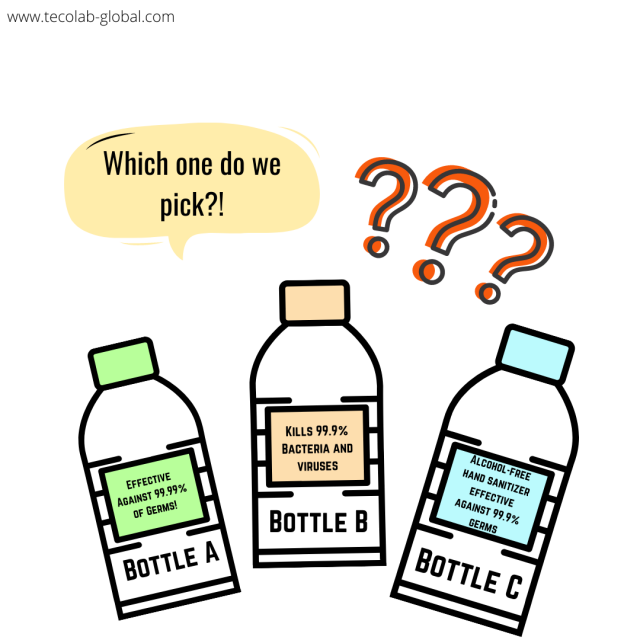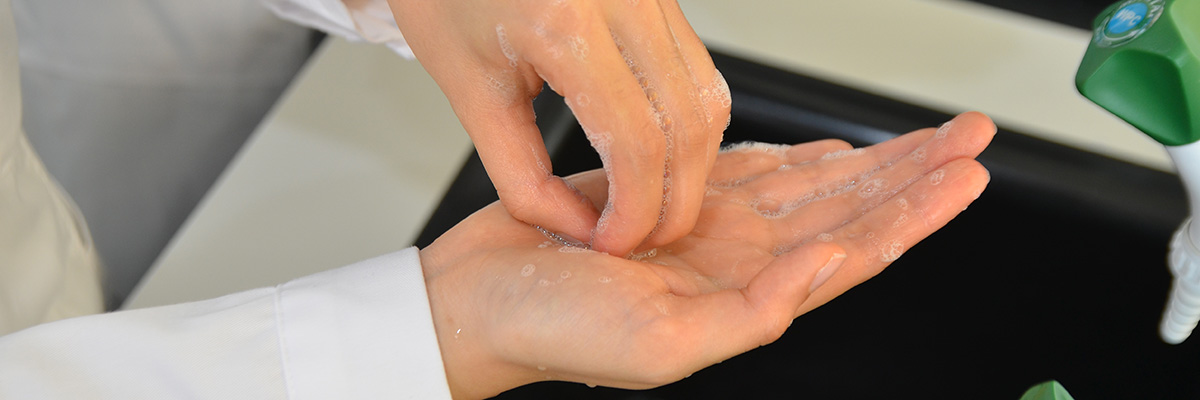 Are you having problems choosing the right disinfectant, whether for personal use, or in a domestic or healthcare facility? The COVID-19 outbreak has fueled a demand in disinfectants, creating a spike in the disinfectant production sector and it’s availability to the global market. Here are 5 easy steps to help you select the right disinfectant for your application:
Are you having problems choosing the right disinfectant, whether for personal use, or in a domestic or healthcare facility? The COVID-19 outbreak has fueled a demand in disinfectants, creating a spike in the disinfectant production sector and it’s availability to the global market. Here are 5 easy steps to help you select the right disinfectant for your application:
- Identify the intended use of the disinfectant. Will the product be used to disinfect skin and/or hands, surfaces of facilities or medical devices, or surgical or dental instruments? These disinfectant products are commonly identified as hygienic hand wash or handrub, surgical hand wash or handrub, surface disinfectants, and instrument disinfectants. Each category of these disinfectant products require a minimum spectrum of antimicrobial activity to fulfil, which brings us to the second step:
- Check the efficacy and kill time of the disinfectant . Turn to the bottle label and check on the spectrum of efficacy. The efficacy spectra include bactericidal, yeasticidal, fungicidal, virucidal, mycobactericidal, tuberculocidal, and sporicidal activities. No doubt, a disinfectant does not require all 7 claims to be effective, but do check for those that are most suited for your application. The recommended minimum spectra are bactericidal and yeasticidal activities. The kill time—or sometimes referred to as the contact time—of a product application refers to the duration needed for the product to be effective. However, we have to be mindful of its practicality. For example, a product claiming to have sporicidal activity after 60 minutes of exposure on a surface that is prone to be in contact with patients is not ideal as some disinfectants easily evaporate and a 60-minute contact time would require localized soaking, which may not be suitable frequently contacted areas.
- After you’ve checked the efficacy of the product, proceed with the third step that is checking if the active substance of the disinfectant is compatible with the material of contact. This is because some products containing a high concentration of alcohol may not be suitable for alcohol-sensitive surfaces. Bear in mind, this does not mean an alcohol-free disinfectant will not affect the surface as those disinfectant may also contain other reactive substances. For instance, some alcohol-free disinfectants containing chlorine compounds or peracetic acid may not be compatible with some metals as they are likely to cause corrosion. Click here for our blog post on how to choose the right active substance for your disinfectant.
- Speaking of corrosion, the fourth step relates closely to personal safety. Identify if the disinfectant requires any personal protective equipment (PPE) when in use. Ensure that suitable gloves are worn when using products such as surface or instrument disinfectants. Some chemicals present in their formulation may cause skin irritation and sensitization after prolonged exposure.
- By using proper gloves, we can prevent spending in dermatology clinics for skin irritation treatments, and this brings us to our last step to consider: the pricing of the disinfectant. TECOLAB values our customer’s expenditures and we would want our customers to get the best service without overspending. On the contrary, when it comes to choosing a disinfectant, a too-good-to-be-true price does not necessarily give good quality products. Keep in mind that hospital-grade disinfectants generally costs more when compared to a household-grade disinfectant due to its broad spectra of activity. This relates back to the first step, which is to determine the intended use of the product. A hospital-grade surface cleaner might not be necessary in a household setting.
TECOLAB has several other informative blog posts regarding disinfectants here. If you have more questions, please contact us! Our team of experts will be happy to assist you.

